Cake Delivery Made Easy
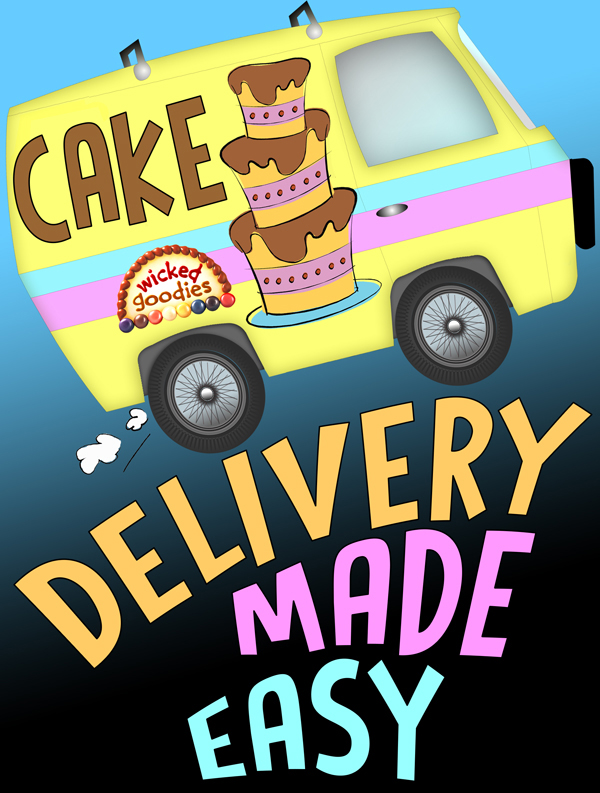
Tales from the Road
VIDEO: Cake Delivery Disaster Stories
The first time I witnessed a wedding cake get smashed was at a 200-person wedding in a venue that had a red carpet–lined staircase leading up to the banquet hall. As a server on the catering crew, I watched a server lift the 4-tier wedding cake up the stairs by himself. Halfway up the staircase, he lost his footing, teetered backward, and smooshed the cake into his chest. I was the one who ultimately fixed the cake, all the while wondering if I should pursue this sort of career.
Many years later, when my dream of becoming a professional pastry chef was realized, I left a bakery with a refrigerated box truck full of five wedding cakes. I pulled out of the parking lot and waved goodbye to the sales manager, who had just reminded me to deliver the cakes in her assigned order. I immediately screwed up and went to the last location first, which made me late for the next four deliveries. At the second stop, the event manager’s eyes grew wide. “No, Kristen! That’s not the one!” I had set up the wrong cake, which created another delay. At the fourth wedding, the guests were already sitting down to eat by the time I showed up. The fifth wedding was on a cruise ship that was about to pull out of the dock. I had to run through the parking lot with the cake to get there. At some point during this frantic escapade, a complaint was called into the bakery about my speeding around town with the company truck.
You never know what’s going to happen on the road. I once attended a party with a bunch of cake delivery drivers. We went around the room telling stories of our worst accidents ever. One guy recounted the time he was in the middle of transporting a wedding cake down I-95 South from Massachusetts to New York when a bird crashed through the windshield of the van. The bloody, feathery mess was so bad that he had to pull over and wait on the shoulder of the highway for the bakery to dispatch a replacement vehicle.
Another driver from that same bakery once opened the back door of the delivery van to find a bird perched atop a wedding cake. It had somehow gotten into the back of the vehicle and while trapped inside, walked all over the frosting and pecked holes in the side of the cake. That time, the bakery had to dispatch a whole new cake.
In my first year of making and delivering wedding cakes, I got stressed out to the max. I had heart palpitations and adrenaline surges and a raging paranoia that the cake would topple over in transit. Stressful things did happen, too. The first time I delivered two wedding cakes, they slid across the trunk and smashed into each other because I hadn’t secured them down properly. Several times, the frosting cracked and the colors ran because I didn’t yet understand how to exercise temperature control. Once, I piled fresh whole berries all over the cake before transporting it. Half the fruit tumbled down during the car ride, gouging holes in the frosting.
A thousand wedding cakes later, I’ve developed a system that is reliable and sound. My goal with this tutorial is to minimize the kind of stress and pitfalls that you are likely to encounter in the beginning of your delivery career. Herein is everything that I learned during my commercial baking career about the process of transporting cakes safely to their destination.
Watch me deliver this little doll cake from Boston to the South Shore, to the house of some old and dear friends.
VIDEO: Cake Delivery Made Easy in Boston
Recommended Delivery Equipment
Sheet Pans & Pizza Pans
For transporting multiple cake tiers that are not yet assembled, I recommend using commercial sheet pans that have a lip running around the outer edge of the pan so cakes can’t easily slide off. A full sheet pan can fit two, sometimes three cake tiers. Half sheet pans are good for transporting one single cake tier. The average-sized car trunk can fit two full sheet pans, maybe three. To ensure that cakes don’t slide around on top of the pan, use non-slip rubber shelf liners.
Non-Slip Rubber Shelf Liners
No matter whether cake drums, pizza pans, cardboard scraps, or sheet pans are involved, be sure to keep all elements of a cake secure during transport using non-slip rubber shelf mats, also known as contact grip liners, which prevent objects from sliding around in the car. I recommend cutting them up into smaller 4” x 4” squares. Put one square between the cake and the sheet pans and one or more between the pan and the floor of the vehicle. Anything that is at risk for sliding around should be secured with contact grip liners. They are a worthy investment as they can be reused over and over again.
Cake Delivery Kit
On every delivery, I recommend taking the following set of tools along with you. These tools are what are needed to assemble a cake and fix a problem if one should arise. I once worked at a bakery that had several stocked caddies on hand just like this for the drivers to take with them on their way out the door.
- Rubber gloves
- Scissors
- Small pastry bag filled with frosting (same color/s as were used on the cake) and fitted with a pastry tip (same tip/s as were used to decorate the cake)
- Any extra decorations that were left over from that design (very handy for patching up a flaw)
- Damp towel in a sealed bag for cleaning hands or utensils, because frosting and chocolate can be messy
- Dry paper towels
- Clean, dry kitchen towel
- Pointed horizontal support dowels, if assembly is required
- Small offset spatula
- Medium offset spatula
The Indispensable Offset Spatula
The most important tool to remember to bring to a cake delivery is a small offset spatula and medium offset spatula. This tool is necessary for assembling cakes because it helps lift and place tiers down. The importance of the offset blade as opposed to a straight one is that it enables you to lift and place cake tiers down without your hand coming in contact with the cake. For handling small and medium tiers, I prefer the small offset spatula. For handling large tiers only, I prefer the medium offset spatula.
Some people prefer to use a hefty cookie spatula for handling larger tiers because it has more surface area and is a more familiar tool. Keep in mind that a blade with more surface area increases the chance that you’ll graze the cake and leave a mark. However a good rule of thumb is to use whatever piece of equipment makes you feel most secure.
Tray Stand
A collapsible tray stand is a great item to own for setting down full sheet pans or half sheet pans loaded with cakes. At a wedding venue, there are tables and chairs everywhere but they are usually already set with fancy linens by the time the cake arrives, so it can be hard to find an appropriate place to put trays of cake. If you don’t already own a tray stand, you can usually find one at the venue. Just ask one of the servers if you can borrow one of theirs.
Delivery Vehicle Specifications
The ideal kind of vehicle for cake delivery is a van, SUV, or hatchback. A more compact car with back seats that fold down to expose the trunk also works. No matter what kind of vehicle you use, it’s important that the air conditioning system is operational.
What Part of the Car to Use
Always place the cake in the most level part of your vehicle. Never transport a cake on a tilted surface such as a seat or a folded down back of the seat that is not level. Never carry the cake on your lap. Avoid putting the cake in a part of the car that is exposed to sunlight. For this reason, the trunk is a good choice.
Cleanliness
At least one day before the event, fully clean and vacuum the delivery vehicle, especially the trunk, if that’s where the cake is going. Beach sand or flecks of dried leaves will jump off car upholstery and adhere to a cake during transport so all debris must be cleared prior to delivery. The outside of the car should be presentable as well.
Loose Objects Rule
It’s critically important that there are no loose objects in the same space as the cake. Anything that is lying around (car jack, umbrella) could potentially slide into the cake. The same goes for things that are laying on the backseat if/when a cake is in a foot well.
GPS
Because wedding and party venues are ever changing, cakes go hither and yon. Printed directions and map books require a lot of fumbling about. A GPS offers the advantage of helping you get there no matter how many times you make a wrong turn.
Delivery Sign
It helps to keep a sign in your delivery vehicle that reads, CAKE DELIVERY IN PROGRESS in big bold letters. You can tuck this into the dashboard when you have to park your car illegally. Half sheet cake cardboard makes the perfect-sized delivery sign. This will save you from ticketing and hassle.
Delivery Driver Attire
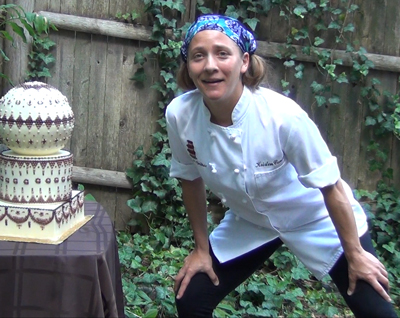
Above is photo of me, sweating bullets on a hot summer day in Boston.
Clothes
For professional cake deliveries, I recommend wearing a chef coat with your name and company logo on the chest. For pants, black slacks are ideal. Wear shoes that are extremely easy to walk in, such as sneakers with non-slip soles. Do not wear heels.
For social events that you plan to attend, consider delivering the cake in a spare shirt. That way if you get frosting on your clothes, you don’t have to wear it during the party.
Hair
When handling food, hair should always be tied back tightly in a bun or secured under a hat or bandana. Ponytails are not recommended as they can swish across the side of a cake.
Platforms & Platters
Working Platform
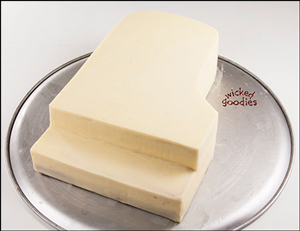
When frosting wedding cake tiers and sculpted cakes, the working platform is an essential element to keeping the cake safe and stable at all times. It is only used during the production and delivery phases. It serves to support tiers from underneath right up until display time. Recycled cake boards, drums, or large scraps of cardboard work well for this purpose. It should be bigger than the cake so it’s easy to hold onto but not so much bigger that it gets in your way while working or exceeds the space in your refrigerator.
For round or shaped cakes, I prefer to use inverted pizza pans because they are stiff and can be reused over and over again. The larger-sized pizza pans can also act as extensions on the cake wheel for frosting larger-sized round tiers or oddly shaped cakes. The kind of pizza pan that works best has no crease at the curve.
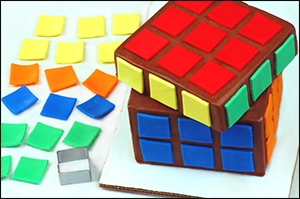
Cardboard cake circles or scraps also make decent working platforms for cakes. These can usually be reused a few times by scraping off any dried remnants of cake and frosting. To make cardboard bases more sturdy, seal two or more pieces together using packing tape.
Cake Platters
>> Go here to read about cake platters <<
Managing Multi-Tiered Cakes
When in doubt, your best bet is to transport a multi-tiered cake in pieces then assemble the tiers at the event. For beginners, this is the surest way to avoid transportation-related damage. Keep in mind that this will require more trips to and from the car. It will also require more time for set-up upon arrival, so plan accordingly.
If there are decorative elements that go onto the cake such as loose fruit, fresh flowers, large edible flowers, or a cake topper, these items should not be placed on the cake until it is on site at the event. Make sure all decorations that are added to the cake before transport are fully secure and not in a position where they are likely to slide or rip through the sides of the cake.
Infrastructure
Even basic stacked cakes require interior supports to prevent tiers from shifting or getting squashed. There are two kinds of supports involved with this method: vertical support dowels, which should always be inserted prior to delivery and horizontal support dowels, which may be inserted before or after the delivery depending on if the cake is transported in pieces or not. I recommend using wood dowels for cake infrastructure because it is a reliable and economical method. You can read all my best tips in this tutorial on how to use wood dowels in stacked cakes.
If you use the SPS (single plate separator) system as infrastructure, do not assemble the cake in advance as there is no way to secure the tiers from sliding horizontally. The SPS system is designed specifically for setting up multi-tiered cakes on site.
Two-tier cakes typically hold up well in transport. This option applies to stacked cakes also, meaning you can assemble the bottom two tiers in advance. When two or more tiers are stacked before delivery, be sure to install both vertical and horizontal support dowels.
Three-tier cakes also may be transported fully assembled as long as you are familiar with how to install sturdy dowels in multi-tiered cakes. Always confirm that there is enough clearance in your vehicle before assembling a multi-tiered cake.
How to Assemble a Stacked Cake
VIDEO: How to Assemble a Stacked Cake with Wood Dowels
- Check to confirm that vertical support dowels have been inserted into all tiers that will be supporting weight from above.
- Check to make sure there is a parchment paper liner on each tier that will have another tier stacked above it.
- Determine if there is any damage to the cake or decorations from transport.
- If needed, correct any damage to the frosting/decorations before assembling the tiers. Alternatively, locate the damaged side of each tier and arrange to turn it to the back side where it is least likely to show.
- When applicable, begin by placing the base tier of the cake on the cake stand. The cake stand should be in the middle of the table, in its intended display position.
- If no cake stand is involved, place the base tier of the cake in the center of the table. Always begin assembling the cake in its intended display position since it will be heavy once it’s put together. Avoid having to slide the cake across the table after assembly since sliding a heavy cake across linens will pull and winch the fabric out of alignment.
- Use a small offset spatula to lift the second tier off its working platform. Lift the cake just high enough to slide your opposite hand underneath the cardboard. Keep in mind that wherever you use the spatula, you will likely dent the bottom of the cake. Additionally, the opposite side of the cake from where you place the spatula—the part that remains grounded when the cake is tilted—may get slightly crushed on the edge. For this reason, always lift and tilt from the places that are the intended sides of the cake. Avoid lifting and tilting in the places that you intend to be the front view of the cake.
- Visually line up the cake tier with the parchment paper liner that is on the tier below. This should help guide its placement. First, set down the edge of the tier that is farthest from you.
- Place the small offset spatula underneath the base of the tier where it is closest to you.
- Before setting down the rest of the cake, shimmy the tier into place. Look from the right, from the left, and above that the tier is on center.
- Set the tier down. Do not remove the spatula until you have checked once more that the tier is correctly centered. Now you are free to walk all the way around the cake to be sure.
- When pulling out the spatula, push down gently to compensate for the weight of the cake above. If you don’t push down, the spatula will spring up when you remove it, which may gouge the upper tier. However, don’t push down so hard that you gouge the tier below.
- Add horizontal support dowels next (if applicable).
- If there is any damage to the edges of the upper tier, fix it now before proceeding with the next stacked tier.
- Continue with the next tier, following the same procedure described above.
How to Carry an Already-Assembled Cake
If a multi-tiered cake is already stacked high before delivery, then the infrastructure must be sound. That means all the lower tiers should be fortified with vertical support dowels to prevent them from collapsing under the weight from above. That also means horizontal support dowels should run through the center of the cake to prevent tiers from shifting side to side.
Keep in mind that assembling the entire cake prior to delivery means you will have a very heavy item to carry. Never stack a cake in advance if you lack the strength to hold it for a prolonged period of time. Large cakes in particular are much easier to carry in pieces.
If you have a helper, each person should take one side of the platter with two hands and carry the cake. Always hold the platter so that your fingers and thumbs are underneath it. You must both be fully in sync and communicate effectively so the cake does not tip or teeter. It’s better to walk sideways when two people are involved as opposed to one in front and one in back. That way, both people can see where they are going.
If you don’t have a helper, I recommend using your shoulder as your helper. It is easier to carry a heavy item on your shoulder than it is to carry it out in front of your chest. When you carry a fully assembled cake in front of your chest, it puts a tremendous strain on your wrists and biceps. This method runs the risk that you will smoosh the cake into yourself.
With the refrigerator door open, pull the cake platter all the way to the edge of the shelf and slightly beyond before attempting to lift it. This will make it easier to get under the base. Crouch down and slide one edge of the platter onto your right shoulder (if you are right-handed). Bend the palm of the right hand at a 90-degree angle so that the palm is face up. As you slide the cake out the rest of the way, place the palm under the rest of the platter. Allow your shoulder to absorb the weight of the cake while your hand acts as leverage, keeping it steady. This way, you also have a free hand to open and close doors.
To get the cake into the vehicle, reverse the order of the above action. Crouch down so that the cake platter is level with the back of the vehicle. Inch your right fingers out of the way so that the lip of the cake can rest on the edge of the floor of the backseat. Slide the cake into the car and off your shoulder.
If a trunk is involved such that you can’t slide the cake directly into the backseat, first transfer the cake from your shoulder onto the frame that rims the trunk. Use two hands to balance it there before hoisting it down into place.
Upon arrival at the venue, follow the same set of steps that were used to get the cake out of the refrigerator. Again if a trunk cavity is involved, first lift the cake to balance it on the frame that rims the trunk before transferring it onto your shoulder.
Cake Decoration Tips
Dark-on-Light
Never add any dark finishing elements to a light-colored cake before transport. Keep those elements in a cool dry place in closed containers until arrival at the venue. Wait to place items like bows, toppers, and large edible flowers on the cake until the last possible moment.
Cake Toppers
Sometimes the customer purchases a custom cake topper from another source. When this happens, make sure to check in advance that the base of the topper fits on the top tier of the cake. Keep in mind that the top tier is always the first part of the cake to get soft. It is especially prone to splitting or sagging if too much weight is placed on top of it. If the topper will be heavy, be sure to include two or more vertical support dowels with the top tier. If you are not sure what the weight of the topper will be, bring along some extra dowels with clippers so that you can insert supports if needed.
Fresh Flowers
Fresh flowers are a popular way of decorating a wedding cake and/or the wedding cake table. It should be the customer’s responsibility to contact their florist and place this order. If flowers go directly onto the cake, the florist will want to know the size of the cake so they can plan accordingly. If the customer requests a spray of fresh flowers as their cake topper, most florists can put this together in advance. If this is the case, make sure to add some vertical support dowels to the top tier of the cake so that it can support the weight of the flower topper.
Sometimes, the florist will expect to place the flowers on the cake themselves. More commonly, they will refuse to do so. Florists who are not experienced at dealing with a cake are likely to damage the cake while finishing it. I recommend taking care of this job yourself whenever possible.
Keep in mind that some varieties of flowers and greenery are toxic to humans and should not come in contact with the edible surface of a cake. Flowers whose stems have been freshly cut can transfer toxic juices onto a cake. A good florist knows which flowers are safe and how to prepare them. When in doubt, seal the base of each stem with plastic wrap.
Temperature Control
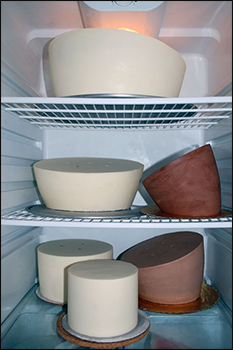
Temperature control is a vitally important aspect of cake delivery. Temperatures vary depending on the season and your geographic location. However, one fact remains constant: cakes are sensitive to heat, direct sun, and humidity. This buttercream frosting method explains how I use the refrigerator to store and control surface temperatures.
The ideal temperature for a cake before delivery is refrigerator temperature. Cakes that have butter-based fillings and frostings, which are sensitive to heat, are more stable and easy to transport when they are first chilled, which helps the softer elements set and become solid. Freezing is not recommended before delivery as this will cause excess condensation problems. However, freezing is recommended in the earlier stages of filled cake assembly. Follow this link to read more about how I use freezing and refrigeration for cake stability.
Managing Bad Weather Conditions
What to Do in Humid Weather
When it’s very humid, a cake is even more likely to develop condensation, which is okay when dealing with a plain white cake but when bold colors are involved in the decor, especially dark reds, blues, and blacks, they may begin to streak or puddle.
If streaking or pooling of colors becomes a problem, you can take the edge of a clean paper towel and touch it to the wet area to help soak up some of the moisture. Capillary effect will pull the moisture away as soon as you make contact. You can cover larger surface areas using the same technique with the flat surface of a paper towel. This is the easiest way to remove beads of moisture from the surface of a cake.
What to Do in Warm Weather
The best thing to do in the warm season is to work at night, after the sun has gone down. Do not leave the cakes out on the countertop when you are not working on them. Transition them in and out of the refrigerator swiftly and often between the stages of frosting and decoration. Before delivery, keep the cake in the refrigerator for as long as possible to cool its core.
Ten to fifteen minutes before loading the cake into your vehicle, run the air conditioning until the space is cool and fully load the vehicle before bringing the cake outside. As soon as the cake is in the vehicle, start driving with the air conditioner on high and pointed toward the back of the vehicle. Make sure that there is nothing unnecessary obstructing the path of airflow into the trunk area. You might want to bring a sweatshirt to stay warm in your chilly vehicle.
What to Do in Hot Weather
(or When the Cake is Extremely Unstable)
When you have an especially hilly drive or a precarious cake such as topsy turvy or tapered tier style, the top tier is more vulnerable to falling over and/or melting around the top edges. For protection, you can build a contraption inside a cooler that keeps cakes cold and secure. Two pre-stacked tiers such as the top two tiers of a wedding cake can travel in a cooler like this as long as there is enough head space inside. Larger cake tiers can also travel this way if your cooler is big enough. Since I use the dowel infrastructure system, this step also readies the top tier to be skewered into the cake. Better yet, it also makes the top tier easy to handle for setup because you can lift and control it with the help of the dowel. This is a rather involved transportation setup that takes extra time to put together so be sure arrange this in advance.
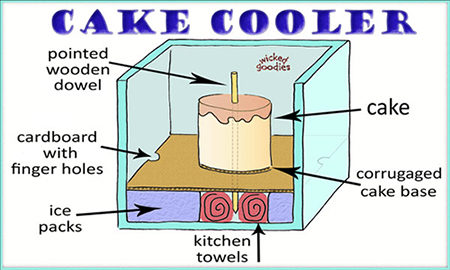
Above is a cutaway view of what’s inside the cooler.
Items needed
• Standard hard-shell food cooler
• ½” cm wooden dowel, sharpened
• Kitchen towels
• One or more frozen ice packs
• Large piece of cardboard
• Serrated knife for cutting cardboard
• Scissors
• Hammer
- First, using a serrated knife, cut the cardboard to the same dimensions as the interior of the cooler. With scissors, cut two finger holes in opposite sides so that the cardboard can be gripped and slid in and out of the cooler.
- Line the bottom of the cooler with ice packs. Fill the middle with kitchen towels and fill all the empty space around the ice packs with more towels or packing material so that nothing slides around. Do not put an ice pack in the middle, directly beneath the cake since the dowel will go there. Make sure everything is tightly packed and level.
- Place the fitted cardboard platter on top of the ice packs and towels.
- Sharpen a long wooden horizontal support dowel. This should be almost twice as tall as the top tier. Sand down its point to dull it just slightly so that it doesn’t break off in the cake. Remove the cake from the refrigerator. Push the sharpened dowel through the top of the cake. Push it down until it begins to penetrate the corrugated cake base. Do this while hanging the cake off the edge of the countertop so that the dowel has somewhere to go. You may need to tap it with a hammer to make it go through. Once it has fully penetrated the cardboard, pull the dowel back up level with the base of the cake.
- Place the cake inside the cake cooler. Push or use a hammer to tap the dowel through the cardboard platter. Push it all the way down between the dish towels so that it is secure. This will anchor the cake so that it does not slide around or tip over. The dowel should still stick out a couple of inches from the top of the cake.
- To remove the cake from the cooler, grab the dowel with one hand. Slide a small offset spatula under the cake cardboard and carefully lift.
What to Do in Rain, Snow, Sleet, or Hail
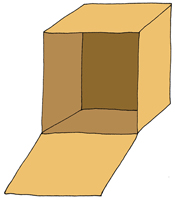
When it’s raining, snowing, or sleeting outside, build a makeshift cake delivery container out of a regular shipping box. Create a sideways opening so that the cake slides in and out of the box in that direction. Do not create an opening in the top as it is much more difficult to get a cake in and out of the top of a box without touching its sides with your arms. Make sure that all loose flaps inside are taped snugly against the side of the box. Reinforce any weak corners or sides with more packing tape. Make sure the box is clean with no dust or debris inside before inserting the cake. Line the bottom with a non-slip rubber shelf mat. Once the cake is inside the box, seal the door flap with packing tape so that it does not shift and so that the box does not buckle when lifted.
Note: When carrying a cake box, always carry it from the bottom, never from the sides.
What to Do in Cold Weather
This is not a bad problem to have. However, extreme cold may cause a cake to expand and contract, which leads to cracking. It can also cause the cake to develop condensation on the surface once it hits a warm room. Just as you would on a hot day, make sure that the cake is well-refrigerated so that it is not shocked by a drastic temperature change when it hits the cold outside air.
What to Do when Traveling a Far Distance
To transport a wedding or specialty cake a long distance, do not assemble it in advance. Put the tiers in large coolers with ice packs underneath them. Fill the empty space around the ice packs with towels. Place the cakes on pizza pans or sheet pans with non-slip rubber shelf mat underneath. To keep smaller tiers—especially topsy turvy tiers—steady and safe so that they don’t slide around inside the cooler or topple over sideways, use the cake cooler method that is described previously under What to Do in Hot Weather.
Arrival at the Venue
Delivery Timing
I recommend scheduling your arrival at the event one hour before the start of the party. In the case of a wedding, that’s one hour before the reception—not the ceremony—begins. That way, if you get held up in traffic, you still have time to set up. Thirty minutes is the average amount of time that it takes to assemble a wedding cake. Just make sure to allot yourself enough time to take photos.
Sometimes, the ceremony occurs in the same space as the reception. When that is the case, aim to arrive one hour in advance of the ceremony. On rare occasions, you may need to deliver a cake to the kitchen. When that is the case, be sure to leave it somewhere that is out of the way of heat, sun, and staff.
First Steps
Avoid walking into the venue with the cake without first getting the lay of the land and surveying the terrain. Before dealing with the cake, bring your supplies inside and figure out where the cake is supposed to go. The cake table is usually the smallest table at the party. If you can’t find it, ask for the event coordinator. Once you locate the cake table, check beneath it to make sure that the legs are fully secure. Oftentimes you will encounter a rented table with the kind of folding legs that need to be nudged into the lock position. First, shake the table and lean your weight on it to test that the legs are locked into place before you put the cake down. If the table has wheels, they should be locked as well. If the table is wobbly, shim it with a piece of cardboard. Second, confirm that the correct linens are on the table and that they are properly centered. Table linens should reach the floor. Sometimes there are two linens to make an overlay effect. In that case, the overlay should be congruent with those in the rest of the room.
Once you’ve located the cake table, tested its stability, plotted the safest, most direct path from your vehicle to the cake table, and propped open any doors that might be in your way, then bring the cake inside.
The Back vs. Front of the Cake
Technically, every cake tier has a front and a back. The back is the place where we begin and end our patterns. It is where the cake artist hides all the “seams.” Seams should be turned to the back whenever possible.
There are only two scenarios for setup: The cake goes in the center of the room or it goes somewhere against a wall. It’s much easier to display a cake against a wall because then you can turn its worst angles out of sight.
If the cake is in the middle of a room so that there is no place to hide the seams, while assembling the cakes, stagger the seams of each tier so that no one seam is facing in the same direction. Point the cake’s best angle to face the part of the room where guests enter.
What to Do When the Cake is Outdoors
If the party is outside, the cake must be in the shade. Never put a cake under direct sunlight or anywhere that the sun is likely to move. You must absolutely insist on this fact. Even a few minutes in direct sunlight may melt the decorations on a cake, so if you find the cake table is poorly placed, act swiftly and decisively. Get someone to help you move it immediately. If it’s simply too hot to display the cake outdoors, firmly insist that the cake be displayed inside instead. It is your job as the delivery person to ensure that the cake goes somewhere safe where it will hold up for the duration of its display period. You will be more informed than the customer on this issue. Do not defer to someone with less experience in this area.
Outdoor Cake Waiver Form
Here is some standard text that you may use to create a disclaimer form for cakes that are due to be displayed outside. Since outdoor display of wedding cakes is never recommended, this will waive you of responsibility should the weather go wrong. This waiver should be signed by the customer in advance of the event so that they understand their responsibilities and can temper their expectations accordingly.
For the customer: Important instructions for displaying your cake outdoors
- Cakes should never be displayed in direct sunlight or anywhere that sunlight might eventually move. It is imperative that your outdoor dessert display area offers adequate shelter from the sun (such as a tent or porch covering). Please arrange this in advance with your event coordinator or person in charge of the event.
- Cakes are safest when they are displayed against a wall. If possible, consider arranging the cake table up against the wall of a house or side of a tent.
- Make sure to display the cake on a stable and level surface that is at least four feet off the ground.
- Please prepare a back-up plan in case of inclement weather. Determine someplace safe where the cake can be displayed indoors on exceedingly hot days or in case of rain.
Outdoor Event Disclaimer Verbiage
I, the undersigned, have opted for my cake to be displayed outdoors. I understand that an outdoor environment is less suitable for cake and may expose the cake to insects, damage, or debris.
I acknowledge that [your bakery name here] is not liable for damage to a cake that is displayed outdoors since natural outdoor conditions such as heat, wind, humidity, or un-level ground can weaken or ruin the infrastructure and/or decorations on a cake. By requesting to have my cake displayed outdoors, I waive my right to dispute problems related to structural weakness, insects/debris, or damage to the outside of the cake.
Follow this link for more bakery disclaimer forms
Troubleshooting Mishaps
How to Handle Minor Mistakes
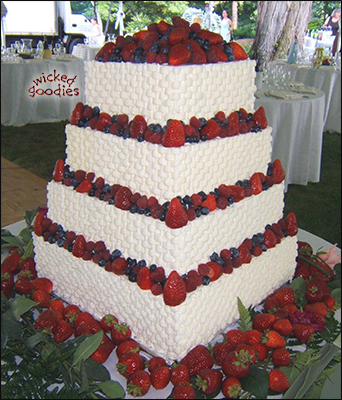
My first ever wedding cake was the above towering basket weave berry design that served 275 guests. During the delivery, I stressed over every little flaw in the piping. All I could see were the flaws. Then I got a text message from my boss that read: Don’t sweat the small stuff!
When it’s your work and your face has been inches away from the cake for hours while decorating, it’s easy to see the flaws. However those so-called “mistakes” aren’t usually apparent to anyone else. Before freaking out or taking drastic measures like attempting to re-frost part of a cake once it is assembled, remember to stand back first and look at it from a regular person’s perspective. In all likelihood, the flaw is not even noticeable at all.
Be warned that trying to fix a flaw at the last minute usually leads to more problems. It’s hard to re-frost effectively once a cake is fully assembled, so fussing with one small flaw can often lead to an awkward cluster of spatula marks. Professionals know when to walk away.
What to Do if the Cake Gets Badly Damaged
Fresh flowers can fix almost any problem. In a pinch, you can always cover up big flaws using flowers or greenery. Pull them from centerpieces or other arrangements or even ask the florist for what you need, if they happen to be present. Florists always have some extra flowers and greenery on hand.
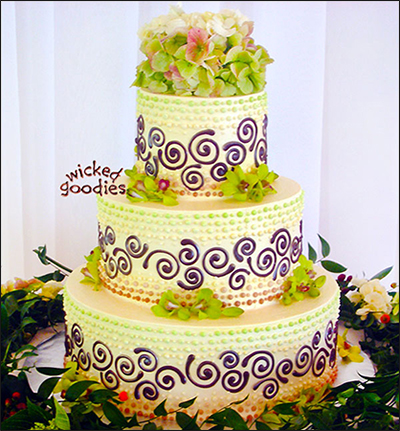
The above cake, which was frosted in Italian buttercream, was damaged when it arrived at the wedding venue because I made the decision to transport it fully set up from Boston down to Newport, Rhode Island, on an extremely hot summer day. On that particular day, a long stretch of the main highway was being refinished so there were miles of rough road to traverse. The long ride in prolonged heat combined with the vibrations from the unfinished road weakened the cake’s infrastructure, causing the dowels to gradually shift so much that the cake settled. It shrunk nearly two full inches in height from where it originally began. Especially the top tier, which was squished toward the bottom and bulging out in some places where the decorations got piled. It was not supposed to be garnished with green flowers but I grabbed them from the caterer and used them to cover up the most damaged parts. If you can’t believe there is anything wrong with the cake in the picture, then I did my job.
In hindsight, had I transported the cake in parts then set it up at the wedding, I would not have had this problem.
The Card Trick
An experienced delivery driver who was not a trained cake decorator taught me this trick. He said that if the cake gets damaged in a hard-to-reach place, you can use a plastic ID or credit card to scrape the frosting back into shape. This is sometimes easier than using an offset spatula as it will give you more leverage in a tight spot.
Note: Always wash the card thoroughly before using it on a cake.
5 Tips for Staying Cool in a Cake Crisis
- No matter how bad the problem is, play it cool. If you panic, other people will start to panic, too. If you stay calm, other people are much less likely to grow alarmed.
- Do not point out or apologize for any damaged parts of the cake to other people during delivery. Just deal with any mistakes quietly. Keep it to yourself.
- Before fixing a problem, lay a clean kitchen towel down with damp cloths on the table. Make sure hands are clean and rubber gloves are on before starting.
- Patch up the mistake then turn it to the back, against the wall. It’s better to improvise by changing the design (covering it up with décor, flowers, or leaves) than by re-frosting to try to make it look like it did before.
- If the damage is beyond repair, consider offering a discount or possibly even a refund depending on the severity of the problem. However this discussion can usually wait until after the event.
Before Leaving the Venue
Step 1. Take a photo of your cake without using the flash. Take at least ten photos of it from different angles, from up high and down low as well as from various vantage points around the room. Capture your images with the best possible view of the background as that will affect the quality of the image. Always collect photos of your work, both for your portfolio and for proof that the cake was delivered intact.
Step 2. Leave a pile of business cards on the cake table.
Step 3. Find the chef or person who is in charge of cutting the cake. Introduce yourself and inform him/her of the number of servings within the cake. If the top tier is to be removed and saved for the first year anniversary, hand over the cake box for that. If it is a stacked cake, describe the dowel system within. Tell the chef that the easiest way to remove dowels from a cake is with a pair of clean pliers. If it’s a sculpted cake, point to where the infrastructure lies and suggest how best to cut and break down each segment. Lastly, give the chef a copy of your business card and let him/her know that if there are any issues with the cake during the party, they should not hesitate to call you.
It is not uncommon that the chef or person in charge has never cut a wedding or specialty cake before. When that is the case, he/she may be visibly nervous about the idea. When you see that look of fear in their eyes, suggest that they break down the cake in the kitchen, out of sight of the partygoers since cutting a cake is a messy process. Tell them to use a serrated knife and that the best way to achieve clean cuts is to clean off the blade after every slice.
Conclusion
Delivering wedding cakes is a skill learned largely by trial and error. In the beginning, you will surely encounter unexpected problems. Go easy on yourself when this happens. Learning the hard way is the nature of this job. It is the best way to ensure that mistake will never happen again. Such experiences will prepare you with better knowledge moving forward.
Remember that one of the keys to being a pastry chef is learning how to cover up your mistakes as you go. That means where there is a fingerprint in the frosting, you strategically place a decoration over it. Where there is a dent in the modeling chocolate, you cleverly pipe a swirl. The art to this job is to make it all seem as if it was done on purpose, even when it wasn’t.
Related Content

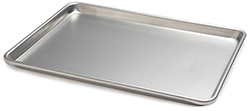
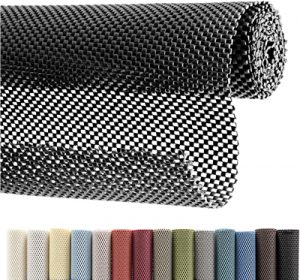
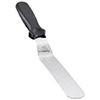

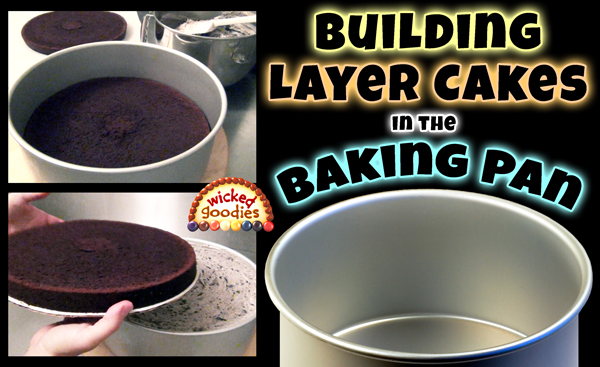
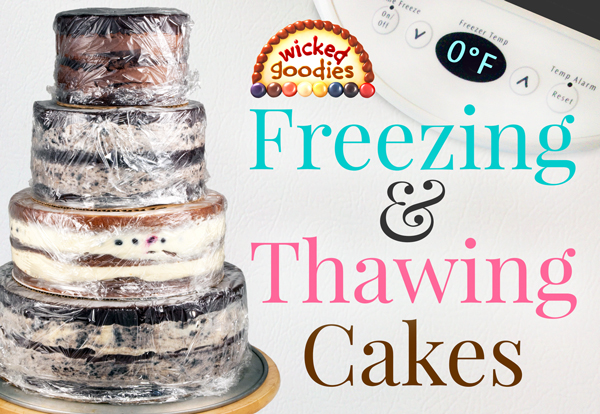
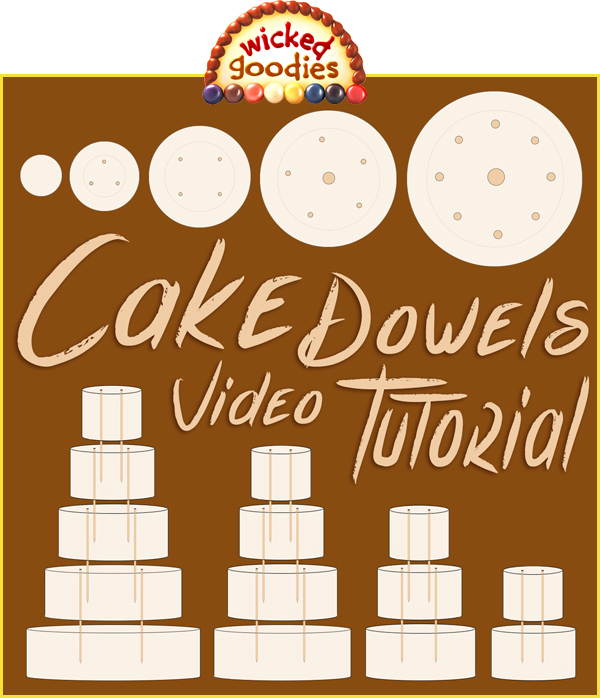
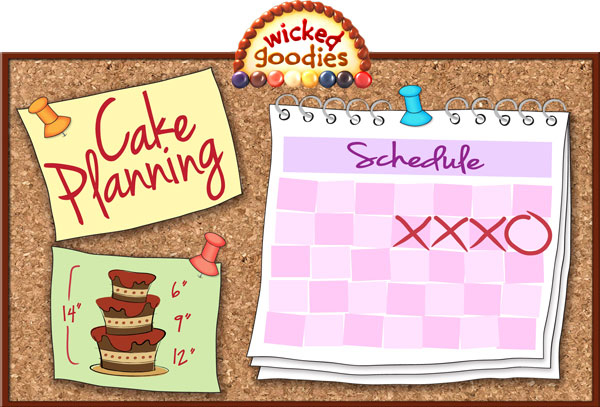
Thank you for your additional information. this can help me a lot in the future. We are provide Online cake Delivery in Varanasi
Online Cake Delivery in Varanasi
Hi, great website
Why is my cake filling mixing with my frosting when I try to crumb coat. I used my torch but it made the filling soft and mixed with my frosting. Help
Hello hope all is well. I would also like a copy. I am a new home baker and could use all the information you have
Hello! I would be interested in receiving a free PDF copy of your book. I would like to have all of this valuable information .I definitely would give feedback to let you know what worked for me! Thank you!!!
Reply ↓
Hello, love your insight and helpful tips. Can you just clarify for me…once a wedding cake has been completly decorated and back in the refrigerator, should it be covered in plastic wrap until delivery or left uncovered?
I would leave it uncovered so as not to damage the decorations. In rare cases when the cake is wrapped in fondant or modeling chocolate that is bare of decorations, I have left the plastic wrap on during transport.
Excellent information! I’ve been out of cake making for many years and was asked to make a dear friends daughters 3 tier wedding cake. Your resources are giving me the confidence that I can do this, and possible explore re-entry into the cake making business in our existing farm store bakery. Thank you, and please keep the great tutorials coming!
Hello! I would be interested in receiving a free PDF copy of your book. I have finally launched a cake business, BuzzyCakes and would love to have all of this valuable information in one place. I definitely would give feedback to let you know what worked for me! Thank you!!!
I baked cakes for a wedding this past weekend and these materials were priceless in making this project successful. I baked in advance, filled layers back into the pan and froze them as instructed in the materials. Then I used the kitchen torch to de-pan them. This method was SO easy and made very clean lines on the round cakes. I’ll be doing this going forward. The thing that saved me was using vertical and horizontal supports as was discussed in this book. I had to break the rule of transporting a cake fully assembled due to the design. I was a nervous wreck but again, installing the supports exactly as instructed made transport a success. I would like to thank Kristen for sharing this knowledge with me because it has helped me be more confident in baking, assembling and transporting tiered cakes. Thanks, Kristen – you are a genius.
One more picture of the finished product after arriving at the venue.
Sandy Yelverton
Is this still available?
The beta testing period is officially closed.
Absolutely!! Already responded to the email!! 🙂
I’m a cottage bakery owner going on 5 years now and just moved across the country to a completely different environment. I would so love to check this out. Beta or paid for!
Hi I missed testing your manuscript, I just thought I would add and I do not know if you have it in the manuscript, that you should always make boxes for your cakes. I was looking at the video where you delivered that beautiful doll cake in the trunk of the car. I just think it looks more professional in a box. It is not hard to make and besides it insulates the cake if you put it in a corrugated box. I bought your other book and I love your work.
So I built boxes in the beginning of my wedding/specialty cake delivery career. What I found was they were more trouble than they were worth (with a few exceptions noted below). A box for a wedding or specialty cake delivery increases your chances of harming the cake. It creates a tighter space for the cake, which means there is a greater chance frosting will get smashed against the wall of the cardboard. Big boxes with empty space inside have a tendency to warp or crush when carried, which also poses a danger to the cake. Boxes oftentimes have debris inside of them which also gets on the cake. Cardboard is not a very insulating material. You are better off exposing the surface of the cake to the air conditioned environment of the car (unless you have a large cooler with ice packs). That way, if something starts to go wrong with the cake during delivery, you can see it happening and pull over to do damage control whereas if the cake is in a box, you won’t know what’s going on.
In professional bakeries that do a high volume of cakes, we simply can’t dedicate the time or resources to house every wedding or specialty cake in a box. Every cake is a different size, so you’d need to keep building new boxes. The cost of cake boxes, especially large ones, adds up significantly. At some bakeries where I worked, we’d be sending out 10-20 wedding cakes in a day. No way could we possibly box every one. Just thinking about the extra time that would take…what a hassle. Only when the customer picks up the cake would we offer a box. We have to save money wherever we can.
A box for a wedding or specialty cake is appropriate for certain weather conditions like rain, snow, sleet, or hail. Instructions on how to make this kind of box are in the book here. So where the box does have its place in certain circumstances, it’s going to be cumbersome and unnecessary in others. Clients/venues don’t judge bakers on the box vs. no box when the cake is going to straight to display anyway. They judge strictly on the quality of the cake. With that said, if a box makes you feel more comfortable, go for it. Just know that it’s not standard practice for bakeries to box these types of cakes for all the abovementioned reasons.
I guess we will have to agree to disagree on that. I send out a large number of odd cakes also. I have bought shipping boxes to do this job for me. we have a few different sizes. 14X14X16 16X16XX21 18X18X21. They are the kind with the four flaps on top and bottom. We tape the bottom and cut opposite the taped bottom and open up the side of the box. Slide the cake in and close the side up with tape. We cut a hole so we can see inside and cover with a piece of acetate. We used to just leave a flap and call it a peek a boo but the acetate looks nicer. So is it more money? Yes, $5 more. Does it look more professional? I think so and you may be right about the corrugated cardboard not being a great insulator but it will keep the cold in for a while if you put a cold item in a box it will keep it self cold and contained.
Aside from this I just have to tell you I can tell your work anywhere. You are a great artist, there are many people out there that are good and create interesting work but you are unique. I don’t think you remember but a few years back I copied the cake with the ombre’ mexican cake, I called you and was speaking to you about that and using modeling chocolate. I was complaining about the modeling chocolate, and it was getting hard and i could not get it pliable. I still have problems with it. Anyway take a look at my instagram and facebook. We are building a new web site.
Thanks for all your help in the past and for responding.
Teri
Teri,
Fair enough! 🙂 I like this idea about the peekaboo window with acetate. That does solve the problem of not being able to see the cake. I worked at a bakery that used cake boxes designed specifically for cakes and they cost in the $10+ dollar range so it sounds like you’ve invented an affordable and worthy alternative. Thanks for filling us in.
So the main thing with modeling chocolate is that it gets soft as you work with it and then hardens back up when you stop. So it’s a matter of kneading, working the modeling chocolate into a pliable consistency, then performing various tasks associated with those levels of pliability. The timing takes some getting used to. If it is generally too brittle even after you’ve been working with then I recommend kneading in some corn syrup.
Photos on your Instagram look fab! I see you are growing fast. When it’s complete, I will pop over to see how the website turns out. I wish you success with your cake business!
Thank you Kristen. I will send you a heads up when we launch.
Teri
Count me in and please email a “beta” copy of the manuscript. Send it to Renae Heineck at customcakes@onlinenw.com
I use to work in IT testing software and proofing tech. docs. I have also owned Custom Cakes in Oregon and transported cakes for over 25 years. I’m not here to criticize only to compare and perhaps offer feedback. I use your contractual documents as a template for my contract. Thanks for sharing that with others. I look forward to seeing what’s been put together and making a stressful part of his business a little less so.
I would be interested in beta testing. Would love to try new techniques.
Hello! I would be interested in the Beta Testing of your Manuscript. I am not a professional baker but I do enjoy making cakes and cupcakes.
***NOW BETA TESTING THIS MANUSCRIPT*** If you are interested in receiving a free PDF copy of this ebook in exchange for your feedback, please respond to this comment including your full name and email address. If you are selected, I will contact you with more information. FOR A LIMITED TIME ONLY – beta entry period expires on March 1st 2016.